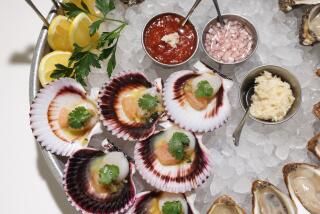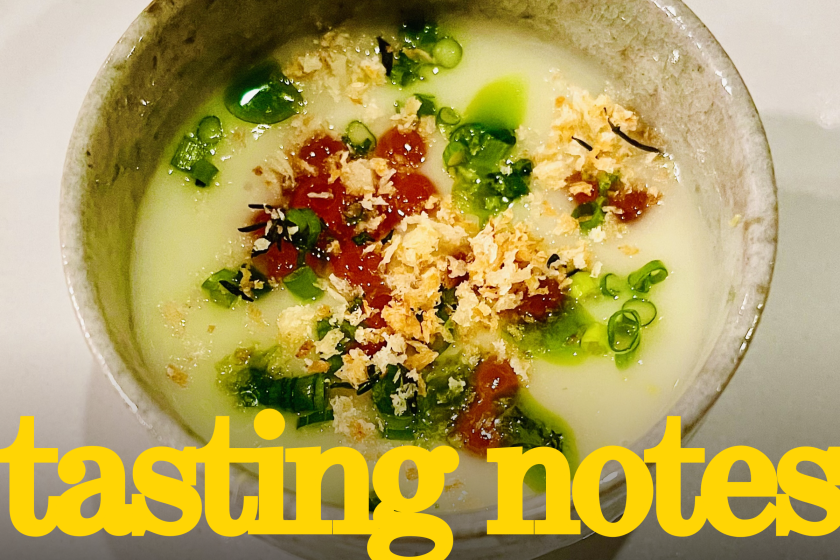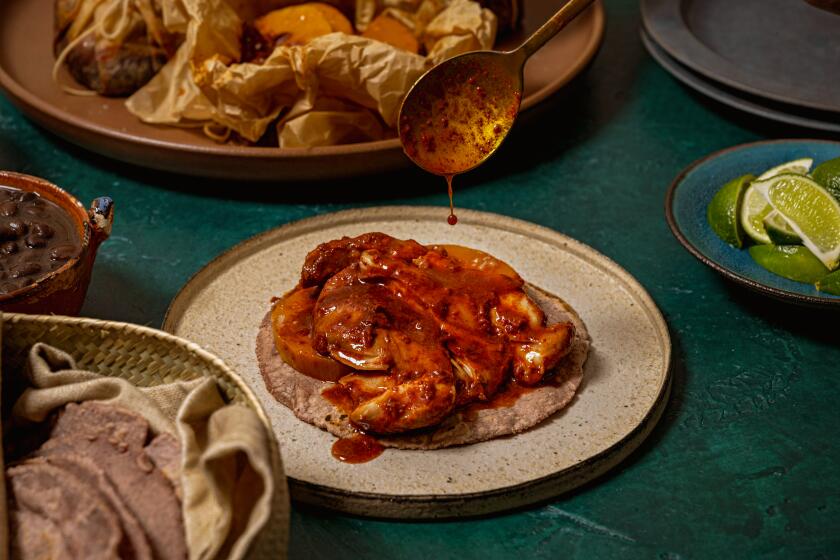Determining Shelf Life, Nutritive Value of Jicama
Question: Please tell me the nutritive values of jicama? What is the shelf life before cutting and how is it best kept after it has been cut?
Answer: In “Fresh Produce A to Z” (Lane Publishing: 1987, $6.95) the editors of Sunset magazine and books say, “Jicama is high in potassium and a fair source of Vitamin C. One cup of shredded raw jicama contains about 50 calories.
“Store whole jicama, unwashed, in a cool (50 degree), dark, dry place for up to three weeks. Wrap cut pieces in plastic wrap and refrigerate for up to 1 week.”
Q: My family are great cookie lovers and I like to make them, but they always burn on the bottom before they are baked. I use the oven temperature suggested by the recipe, but they burn anyway. I don’t think it’s my oven because it only happens when I use the thin baking sheets. Can you help?
A: I think you may have answered your own question. Perhaps the problem lies in the baking sheets you are using. “Choose the heaviest available of the largest size possible--it should fit in your oven with 2 inches of airspace all round,” recommends Chuck Williams in “The Williams-Sonoma Cookbook and Guide to Kitchenware” (Random House: 1986, $19.95).
The author goes on to explain, “The pan should have a lip on one short side to aid in pulling it out of the oven. Some baking sheets have lips on both short sides to make them warp-resistant. While lightweight baking sheets with nonstick surfaces are available, far better baking results are achieved with a heavyweight pan and a sheet of baking parchment.
“One exception is a new patented aluminum cookie sheet, which has a 3/16-inch airspace between two layers of aluminum. It bakes even more slowly than conventional heavy baking sheets and gives excellent results. Baking sheets are made of hardened aluminum alloy, anodized aluminum, tin plate steel, stainless steel and silicon-coated aluminum for non-sticking surfaces.
“Tinned steel darkens after continual use. This is harmless and actually improves the baking performance, because dark colors absorb heat instead of deflecting it. Silicone-coated pans must be treated with extra care to avoid damage to the surface.”
We should also note the difference between the baking sheets described, also often called cookie sheets, and jellyroll pans. The latter have 3/4- to 1-inch sides and are not intended for baking cookies.
Q: I miss creme fraiche, which we used as a sauce in my native Denmark. Do you know where I can buy it or how to make it?
A: Creme fraiche is available at some specialty food stores, but you may also make it yourself. This recipe is from “La Varenne’s Paris Kitchen” (William Morrow: 1981) by Anne Willan.
CREME FRAICHE
2 cups whipping cream
1 cup buttermilk
Stir together whipping cream and buttermilk in saucepan. Heat gently until mixture is about 96 degrees. Pour into container and partially cover. Allow to stand at room temperature 6 to 8 hours or overnight, or until thickened and slightly acid to taste.
Stir cream, cover and refrigerate. Creme fraiche may be refrigerated up to 1 week. Longer storage increases thickness and gives more pronounced flavor. Makes 3 cups.
Note: When making additional batches of creme fraiche, substitute 1 cup creme fraiche for buttermilk.
Q: I have several recipes that call for lemon juice from concentrate. As I have a lemon tree, I would like to use fresh lemons in these recipes. Could you give me the substitution formula?
A: No complicated formula needed--lemon juice from concentrate is designed to be used interchangable with fresh lemon juice. In others words, use equal amounts of fresh lemon juice in the recipes calling for lemon juice from concentrate.
Borden, manufacturers of Realemon juice, explain that to assure each bottle of their product is the same, they concentrate lemon juice to a pre-determined strength, then use filtered water to reconstitute it to the natural strength of lemon juice. They suggest two to three tablespoons lemon juice from concentrate equals the juice of one average lemon.
In response to the July 7 You Asked About . . . column on sources for sorbitol, S. Dedinar advises that it is also available at pharmacies.
More to Read
Eat your way across L.A.
Get our weekly Tasting Notes newsletter for reviews, news and more.
You may occasionally receive promotional content from the Los Angeles Times.










